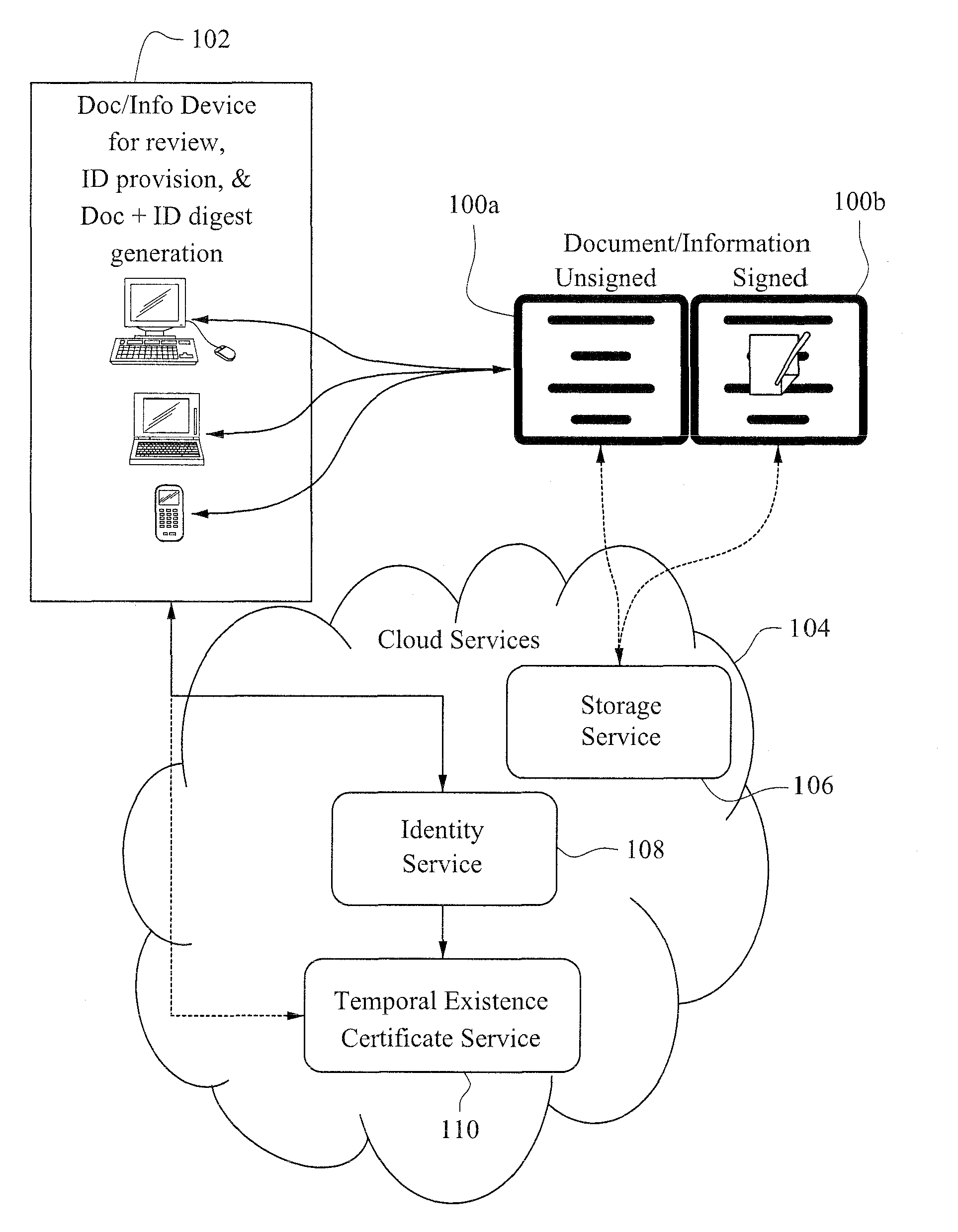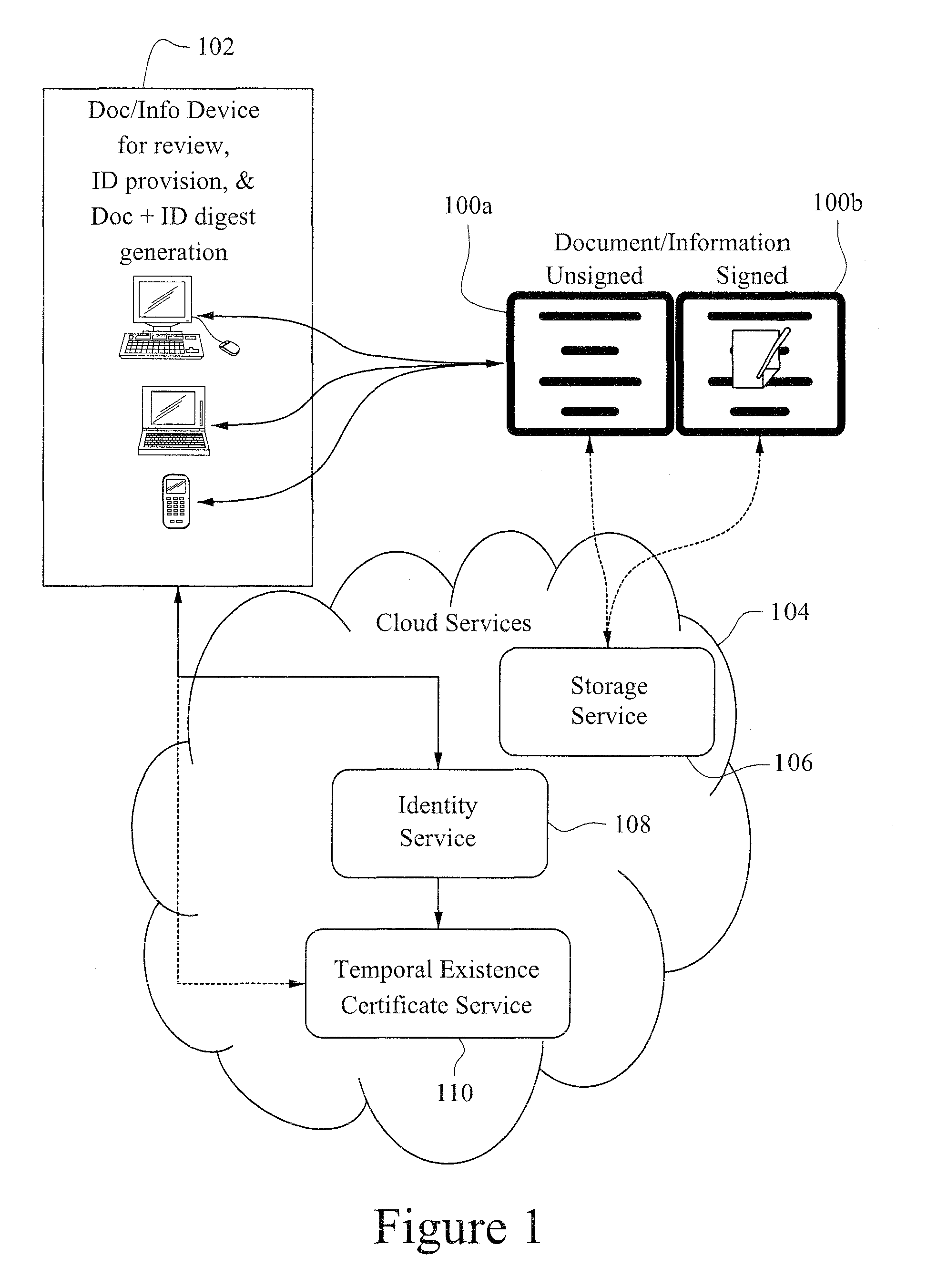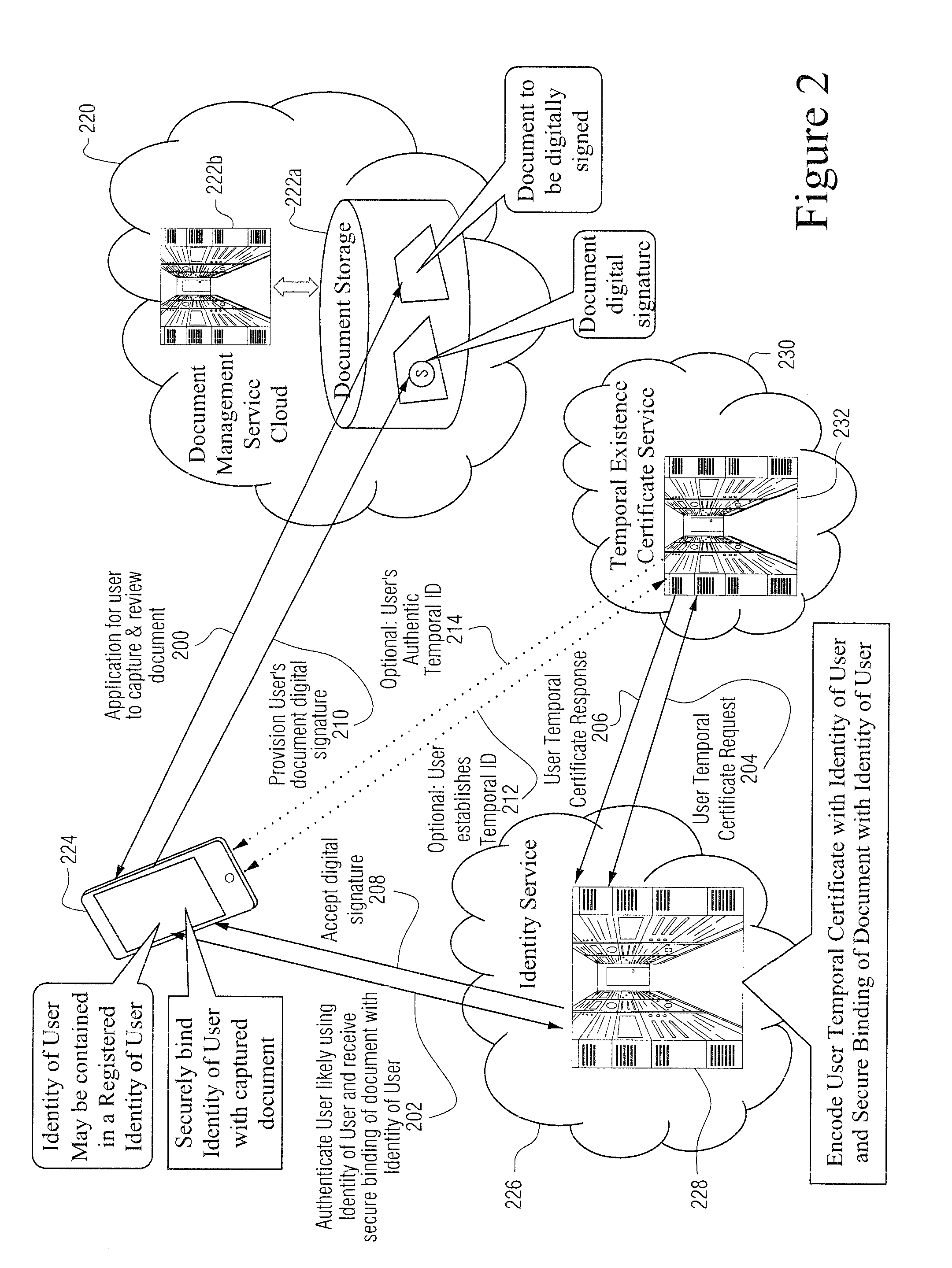Non-PKI digital signatures and information notary public in the cloud
a cloud-based, non-pki technology, applied in the direction of user identity/authority verification, digital transmission, securing communication, etc., can solve the problems of generating enough technical confusion with typical computing users, reducing the number of users, and not being able to establish the legal acceptance of pki digital signatures for day-to-day use, etc., to reduce user information coordination and management, facilitate provisioning and release, and increase user acceptan
- Summary
- Abstract
- Description
- Claims
- Application Information
AI Technical Summary
Benefits of technology
Problems solved by technology
Method used
Image
Examples
Embodiment Construction
[0093]Certain example embodiments herein relate to digitally signing documents. In certain instances, the technique for applying a digital signature to a digital document (or information) is accomplished through the use of non-public key infrastructure.
Data Flow of Non-PKI Digital Signatures
[0094]FIG. 1 illustrates a data flow for obtaining a non-PKI digital signature according to certain example embodiments. Here, a graphical summary shows the flow of data among digital documents, user signing tools, and cloud-based services to fulfill the generation of the various forms of certain example techniques and / or implementations described herein (e.g., without using public key infrastructure (PKI)).
[0095]According to certain example digital signature techniques, access to a digital document or information 100a that requires a signature for appropriate signatory sufficiency is provided. A digital document or information may reside in a variety of places. For example, the document / informat...
PUM
 Login to View More
Login to View More Abstract
Description
Claims
Application Information
 Login to View More
Login to View More - R&D
- Intellectual Property
- Life Sciences
- Materials
- Tech Scout
- Unparalleled Data Quality
- Higher Quality Content
- 60% Fewer Hallucinations
Browse by: Latest US Patents, China's latest patents, Technical Efficacy Thesaurus, Application Domain, Technology Topic, Popular Technical Reports.
© 2025 PatSnap. All rights reserved.Legal|Privacy policy|Modern Slavery Act Transparency Statement|Sitemap|About US| Contact US: help@patsnap.com



